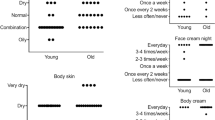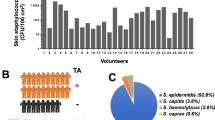Abstract
WHEN human skin is injured, a substance is released into the tissue spaces which brings about the so-called triple response: a local dilatation of the skin vessels, an increase in their permeability leading to wheal formation, and around this an area of further vasodilatation without notable change in permeability, mediated through a nerve axon reflex. Lewis has shown1 that when a needle is pricked into the skin through a drop of a dilute solution of a histamine salt, this same triple response occurs, and he therefore suggests that the natural excitant substance (H-substance) may also be histamine. We have investigated the chemical specificity of the response in detail by Lewis's simple technique, comparing all results with the negligible effects of control pricks through 0·9 per cent saline.
This is a preview of subscription content, access via your institution
Access options
Subscribe to this journal
Receive 51 print issues and online access
$199.00 per year
only $3.90 per issue
Buy this article
- Purchase on Springer Link
- Instant access to full article PDF
Prices may be subject to local taxes which are calculated during checkout
Similar content being viewed by others
References
Lewis, T., "The Blood Vessels of the Human Skin and their Responses" (Shaw, 1927).
Guggenheim, M., "Die biogenen Amine" (Basle: Karger, 1940).
McIlwain, H., Nature, 151, 270 (1943).
Zeller, E. A., "Advances in Enzymology", 2, 106 (1942).
Author information
Authors and Affiliations
Rights and permissions
About this article
Cite this article
CRAMMER, J., HELE, M. Specificity and Mode of Action of Histamine. Nature 154, 18–19 (1944). https://doi.org/10.1038/154018a0
Issue Date:
DOI: https://doi.org/10.1038/154018a0
This article is cited by
-
Leukotaxine and Histamine
Nature (1947)
Comments
By submitting a comment you agree to abide by our Terms and Community Guidelines. If you find something abusive or that does not comply with our terms or guidelines please flag it as inappropriate.



